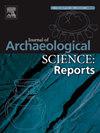Traceological features of anthropogenic incisions on Yuka Mammoth’ hide (Yakutia)
IF 1.5
2区 历史学
0 ARCHAEOLOGY
引用次数: 0
Abstract
The article presents the data of experimental-trasological analysis, confirming the cutting of the Yuka mammoth skin by man in the northeast of Yakutia during of time approximately ca 39,000 – 38,000 BP during relatively warm period (MIS 3). A series of experiments have been conducted to study processing separate hide pieces from different animals including one mammoth individual. It is fundamental to note that for the first time use-wear methods were adapted for the study of soft organic material, namely the mammoth hide which to date has only been available for research in Yakutia.
The result was an understanding of the criteria for the difference between the cuts made by stone and metal tools. In the examination we observed and documented a large incision along the Yuka Mammoth’s spinal ridge and incisions around the eye sockets. Traces of anthropogenic cuts on mammoth skin and their distinction from injuries caused by animals were described. Comparison of the experimental data and anthropogenic traces on mammoth Yuka’s carcass has shown that these cutting can have been made only with stone instruments before freezing the mammoth carcass.
尤卡猛犸象皮上人为切口的痕迹学特征(雅库特)
文章介绍了实验--超声波分析数据,证实在大约公元前 3.9 万年至 3.8 万年的相对温暖时期(MIS 3),人类在雅库特东北部切割了尤卡猛犸象皮。我们进行了一系列实验,研究不同动物(包括一只猛犸象)的不同皮片的加工过程。最重要的是,我们首次将使用磨损法用于研究软质有机材料,即猛犸象皮,迄今为止,只有雅库特地区的研究可以使用这种方法。在检查过程中,我们观察并记录了沿尤卡猛犸象脊柱的大切口和眼窝周围的切口。我们描述了猛犸皮肤上人为切割的痕迹及其与动物造成的伤害的区别。对比实验数据和尤卡猛犸象尸体上的人为痕迹表明,这些切口只能是在冷冻猛犸象尸体之前用石器造成的。
本文章由计算机程序翻译,如有差异,请以英文原文为准。
求助全文
约1分钟内获得全文
求助全文
来源期刊

Journal of Archaeological Science-Reports
ARCHAEOLOGY-
CiteScore
3.10
自引率
12.50%
发文量
405
期刊介绍:
Journal of Archaeological Science: Reports is aimed at archaeologists and scientists engaged with the application of scientific techniques and methodologies to all areas of archaeology. The journal focuses on the results of the application of scientific methods to archaeological problems and debates. It will provide a forum for reviews and scientific debate of issues in scientific archaeology and their impact in the wider subject. Journal of Archaeological Science: Reports will publish papers of excellent archaeological science, with regional or wider interest. This will include case studies, reviews and short papers where an established scientific technique sheds light on archaeological questions and debates.
 求助内容:
求助内容: 应助结果提醒方式:
应助结果提醒方式:


